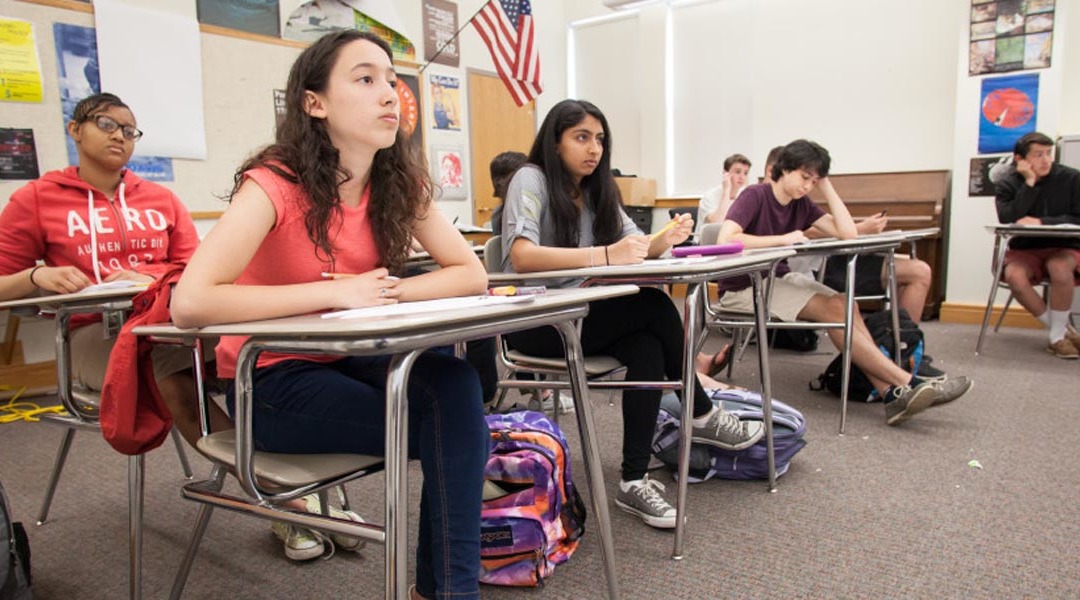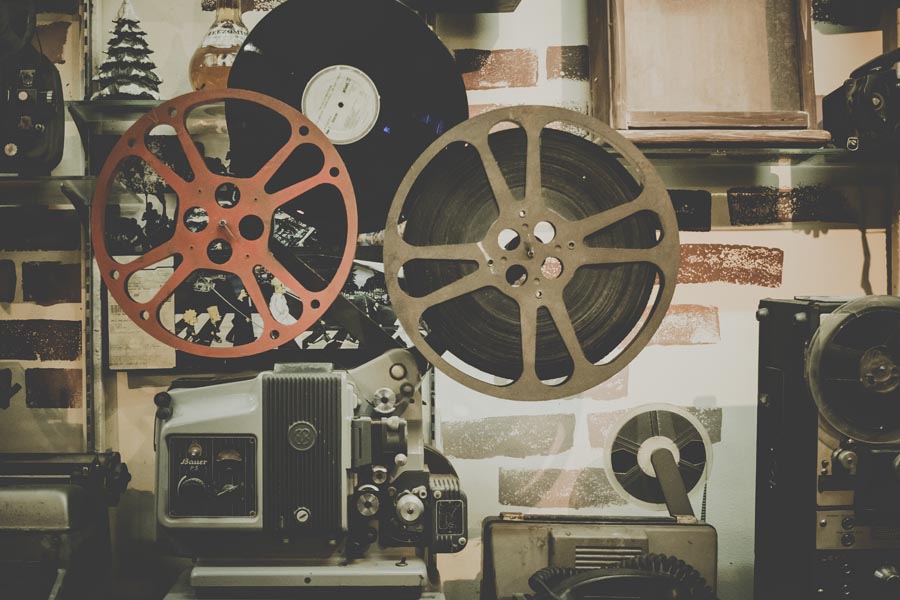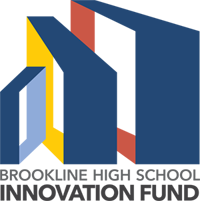Political Literacy
Political Literacy
Headmaster Action Plan
Headmaster Action Plan

Tripod Project/Critical Friends
Tripod Project/Critical Friends
text to come

Finding Yourself in the Curriculum
Finding Yourself in the Curriculum
This summary was provided by the FYC faculty upon program completion, June 2020.
The FYC program is a two-year school-wide initiative that connects students, teachers, and school leaders and develops a deeper understanding of identity through classroom curricula and adult learning opportunities for faculty. FYC serves as a vehicle for learning and reflection about self-identity, for building empathy for others, for promoting awareness regarding power and privilege, for inspiring action, and for furthering the content goals of each individual course. This program allows all BHS teachers to embed thoughtful, course-specific curriculum regarding many aspects of identity, with emphasis on the “Big 8” social identities: race, ethnicity, sexual orientation, gender identity, ability, religion/spirituality, nationality and socioeconomic status (Johnson, 2006). Through this more coordinated and dedicated effort to assemble, showcase, develop, and implement identity-based course content school-wide, BHS can ensure it reaches, hears, sees, and values each and every one of its students.
In the fall of 2018, the three Finding Yourself in the Curriculum (FYC) Teacher Leaders — Marika Alibhai (Math), Liz Crane (Biology), and Julia Rocco (English) — began our project by embarking on a listening tour. We spoke to program heads, curriculum coordinators, other teachers, student groups, and other members of our community to figure out how best to implement our goal of ensuring that identity-related curriculum is fully integrated into all students’ 9-12 learning experiences at BHS. This was an appropriate start, as communication and collaboration was the cornerstone of our work throughout our first year and into our second, when Scott Barkett (Special Education/Social Studies) took Liz Crane’s place on the grant.
Our crowning achievement is our Finding Yourself in the Curriculum website, a resource that we hope will continue to serve our community in the years to come. It includes a glossary of definitions, examples, and frequently asked questions related to the big eight social identities (race, ethnicity, nationality, class, gender, sexuality, ability, and religion) that we created through our reading and our conversations with community members. Teachers can consult this resource to better understand questions like “What is the difference between race and ethnicity?” or “What language should I use when I talk about disability?” before they tackle difficult topics in their classes. They can also use it to link to a wealth of other resources that we found through our research. Students can explore it as well; in fact, in our most recent Asking for Courage Day, when BHS engages in conversations about race and racism, students created a scavenger hunt for their peers to complete in class using the glossary. The website also features a blog with examples of FYC lessons, activities and projects created by teachers from across grade levels and departments at BHS. This blog celebrates the work that teachers are already doing and sparks ideas and collaboration across departments.
Our accomplishments also include:
- Leading workshops on how to embed teaching about identity into content-area curriculum on PSB professional development day, in a Special Education department meeting, and at the 2019 BU Consortium conference.
- Collaborating with Advisory program leaders and contributing lessons to Advisory curriculum to ensure that conversations about identity play a role in that program.
- Leading a Faculty Learning Team that facilitated the sharing of FYC work across departments and the creation of new work.
- Visiting classes and interviewing teachers to share their FYC work with the larger school community.
- Sharing our work with BHS parents through a January 2019 Family Forum.
- Creating a preliminary curriculum map of FYC work in ninth grade.
- Supporting the work of individual teachers and departments (e.g. participating in an 11th grade Social Studies meeting about a common FYC assessment, locating or creating resources for a particular lesson).
As we reach the end of our grant, there are several ways we would like to see our work continue. First, we will need to figure out a way to continue updating our website; we would like to continue adding new posts to our blogs and frequently edit the glossary so that the information stays current. We would also like to explore ways to resume some of our projects that we were in the middle of before schools shut down due to the coronavirus pandemic. For example, we were setting up meetings with K-8 leaders about what FYC can offer Brookline elementary schools.
Finally, we have some reflecting to do after these first months of remote learning. When we are physically distant from our students, how do we engage in effective and sensitive identity work, which requires, at its foundation, close relationships? Further, how does remote learning and school closure affect our students differently based on how they identify? We would like to explore how we as the FYC teacher leaders can support our colleagues as we tackle these challenging questions and work to keep our teaching up-to-date and mindful of identity in our rapidly changing world.

Film as History/History as Film
Film as History/History as Film
Background
According to co-teachers Mark Wheeler (Social Studies) and Thato Mwosa (Visual Arts), “History’s lessons are as important now as they ever were, as we look to our screens for answers to the world’s toughest questions.” Students in their collaborative course, Film as History/History as Film, learn about history and one of the most powerful ways in which it is remembered: the documentary film. “To be truly effective communicators and participants in the 21st century,” say Wheeler and Mwosa, “students need the skills to maneuver both word and image.”
In this full-year senior elective, students address issues of academic research, writing, media literacy, and perspective. Decision-making and ethics are central themes. Students use textbooks, articles, and primary source material to study historical eras and events; they also view documentary films depicting the same eras and events. Analyzing the films for content and technique, students learn to critique the films and the filmmaking choices: including and omitting information, showing both sides of a story, the effects of camera angles and lighting, etc. They also explore in depth the opportunities presented by and limitations imposed by both written and filmed formats.
In addition to written papers, students produce small media projects such as interviews and PSAs. Through these exercises they learn to operate cameras, gain editing skills, practice writing and interviewing, explore elements of cinematography, and generally improve their media literacy. For the culminating project, students research, plan, and produce a film on an era, event, or person of their choice. Final projects are peer reviewed and screened as part of a BHS film festival. Students also have the opportunity to submit their films to national contests, such as C-SPAN’s Student Cam documentary competition. In 2018, BHS students won third place! Read the press release here and watch their video here.

Engineering Innovation and Design
Engineering Innovation and Design
Background
Aubrey Love (Engineering) and Andrew Maglathlin (Art) aim to bring BHS fully into the “Maker Movement,” nurturing our young inventors, designers, artists and tinkerers and preparing them to design and produce for the future.
Engineering Innovation and Design builds on the success of Engineering by Design, which was seeded by the Innovation Fund in 2007. The new course aims to keep pace with students’ growing ambitions by providing in-house opportunities to move beyond 2-D drafting and into the creation of real (3-D) products.
The student-centered, project-based, multidisciplinary curriculum integrates principles of design and aesthetics. It challenges students to interpret real-world engineering and design problems utilizing the “makerspace” — a collaborative setting where students will share their various skills and angles of interest to tackle engineering problems — to conceptualize, design, test, refine and actualize solutions. The addition of this course to Brookline High’s engineering offerings will contribute to the school’s long-term vision of developing of a cohesive Engineering pathway at BHS — a pathway with various entry points, allowing access to a diverse body of students with varying interests and different degrees of experience in art and engineering.
Engineering Innovation & Design fuses art and STEM – Sagamore – June-2022.pdf

Racial Awareness Seminar
Racial Awareness Seminar
Background
The Racial Awareness Seminar, a year-long Social Studies elective originally taught by Malcolm Cawthorne and Kate Leslie, gives students an opportunity to explore the complexities of race within their national and local communities. Offered to sophomores, the class aims to educate students about racial identity early in their high school careers so that they can use this knowledge as they move through BHS to create a safer, more welcoming environment for students of all backgrounds.
The class is uniquely structured and purposefully planned to foster conversations across race and identity lines and to build community among students of different racial backgrounds. It is made up of an equal number of students of color and white students, and an effort has been made to balance gender identities to ensure a diversity of experience. The seminar-style class fosters students’ reflection about their own identities and the identities of others. Students share their experiences and learn from their classmates to develop a greater understanding across racial identification lines.
The Racial Awareness Seminar does not teach a specific history or a new language; it does not teach activism. The class looks inward and focuses on the students, giving them the vocabulary to engage with difficult racial issues and the skills needed to have fruitful discussions about these issues. The focus is on listening, and on the use of protocols to allow for inclusive, balanced and productive conversations. The aim is to foster a learning community where students embrace and are empowered by the rich diversity of identities and perspectives at BHS.
